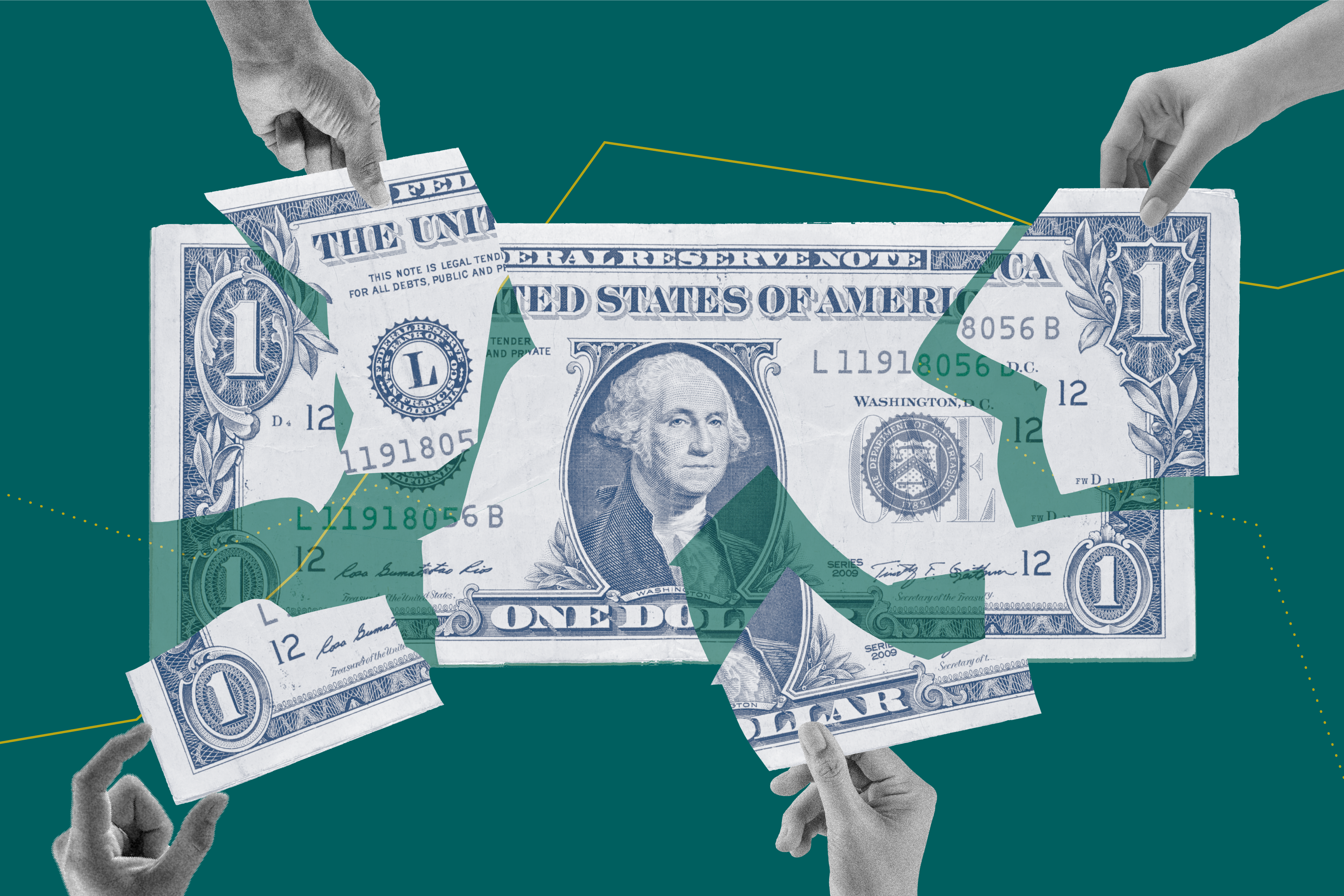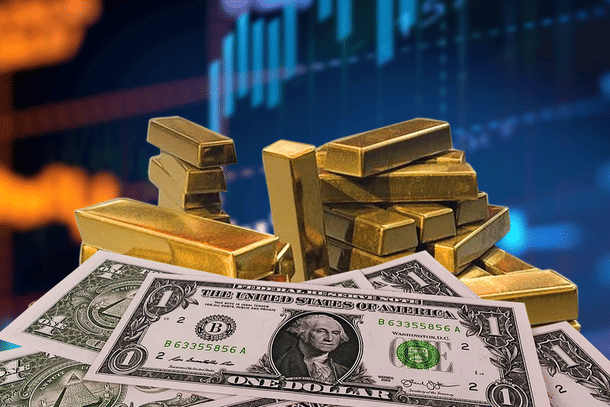
Why the US Dollar Is Still the World’s Reserve Currency in 2024
Why the US Dollar Is Still the World’s Reserve Currency in 2024-In the complex world of global finance, the US Dollar remains the undisputed king. Despite the rise of digital currencies, economic challenges, and shifting global power dynamics, the US Dollar (USD) continues to hold its position as the world’s primary reserve currency. But why is that the case in 2024? And what makes the US Dollar so entrenched in the global economy?
Let’s dive into the factors that continue to bolster the US Dollar’s supremacy and what this means for the future of global trade and finance.
The Legacy of the US Dollar: From Bretton Woods to Today
The dominance of the US Dollar didn’t happen overnight. Its status as the world’s reserve currency was solidified after World War II with the Bretton Woods Agreement in 1944. This landmark agreement established a new global financial system, where the US Dollar was pegged to gold, and other currencies were tied to the Dollar. Though the gold standard was abandoned in 1971, the Dollar’s role as the backbone of international finance remained intact.
Today, the US Dollar accounts for about 60% of the world’s foreign exchange reserves. This means that central banks around the world hold substantial amounts of US Dollars as part of their reserves, using it as a hedge against instability and a stable store of value.
Stability of the US Dollar: A Safe Haven in Uncertain Times

One of the key reasons the US Dollar continues to dominate the global economy is its unparalleled stability. The US has the world’s largest and most diversified economy, backed by institutions with decades of credibility. The Federal Reserve, the central bank of the United States, manages monetary policy to ensure the Dollar remains a reliable currency for both domestic and international transactions.
During times of global economic uncertainty—whether it’s the financial crises of 2008, the COVID-19 pandemic, or geopolitical tensions—the US Dollar has historically served as a “safe haven.” Investors and governments often flock to USD when markets are volatile because of its relative stability compared to other currencies. For example, during the 2020 market crash triggered by the pandemic, the US Dollar surged as investors sought refuge in US Treasury bonds, which are considered low-risk investments.
The Liquidity and Deep Financial Markets of the US
Another reason the US Dollar remains the world’s reserve currency is the sheer size and liquidity of US financial markets. The United States boasts the largest bond market in the world, with US Treasury securities being the most sought-after financial instruments globally. These bonds are considered virtually risk-free, and as a result, they play a pivotal role in global finance.
When countries or institutions need to hold foreign reserves or invest in safe assets, US Treasury bonds are the go-to choice. The US Treasury market offers unmatched liquidity, meaning that large amounts of Dollars can be bought and sold with minimal impact on the exchange rate. This deep and efficient financial market system makes the US Dollar highly attractive to central banks, investors, and corporations worldwide.
Moreover, the Dollar’s dominance in global trade continues to be bolstered by its use in pricing commodities like oil, gold, and other raw materials. This phenomenon, often referred to as the “petrodollar system,” ensures that the demand for US Dollars remains consistently high, particularly among oil-exporting nations and trading partners. (Read More: Comparing the Best Business Bank Accounts for Freelancers in 2024)
The Role of the US Dollar in Global Trade and Investment

The US Dollar plays a central role in international trade. It is the dominant currency for invoicing and settling global transactions, including commodities, goods, and services. This widespread use creates a network effect: businesses, governments, and financial institutions prefer to conduct trade in US Dollars simply because everyone else does.
In addition, the USD is commonly used for foreign exchange reserves. When countries like China, Japan, or the European Union conduct trade with one another, they often do so using US Dollars as an intermediary currency. This is because the USD is widely accepted, and its exchange rate is less volatile compared to smaller currencies. As a result, the US Dollar continues to be the preferred currency for global trade and investment.
Trust in US Institutions and Governance
Another pillar of the US Dollar’s dominance is the trust in the institutions that support it. The US government has a long track record of economic and financial stability. It has the world’s largest economy, a well-established legal system, and a transparent regulatory environment. In addition, the Federal Reserve, the US central bank, is viewed as one of the most reliable and independent institutions in the world when it comes to managing monetary policy.
This trust in US institutions is crucial for the continued use of the US Dollar. While other countries or regions may have experienced political instability or economic mismanagement, the US has maintained a high level of confidence in its ability to manage its economy and finances. This makes the US Dollar a preferred reserve asset for central banks and investors seeking stability. (Read More: DTI Business Registration vs SEC Registration: What’s the Difference?)
Geopolitical Influence: The US Dollar as a Tool of Soft Power
The US Dollar’s status as the world’s reserve currency is also a product of the geopolitical power that the United States wields. As the leading global military and economic superpower, the US is able to exert influence over global financial systems. This influence is reflected in the Dollar’s dominance in global trade, finance, and reserve holdings.
Sanctions and trade policies, for instance, are often enforced through the US Dollar. Countries that wish to trade internationally are often required to settle transactions in USD, which gives the US significant leverage in global affairs. For example, the US has used its control over the Dollar’s global reach as a tool in geopolitical conflicts, such as sanctions against Iran and Russia. This “weaponization” of the Dollar has contributed to its continued centrality in global finance. (Read More: Finance Analyst Jobs: Common Interview Questions and How to Answer Them)
Challenges to the US Dollar: Emerging Alternatives
While the US Dollar remains dominant, challenges to its supremacy are emerging. Cryptocurrencies, such as Bitcoin and Ethereum, as well as digital currencies issued by central banks (CBDCs), are gaining attention. Additionally, countries like China and Russia are actively pursuing alternatives to the Dollar for trade, using their own currencies or negotiating trade deals in other major currencies like the Euro or the Chinese Yuan.
Despite these challenges, however, the US Dollar continues to hold its ground due to its unmatched liquidity, stability, and role in global institutions. Any shift away from the Dollar would require a fundamental change in global trade and finance—a transition that is unlikely to occur quickly.
Conclusion: The US Dollar Future in 2024 and Beyond
As we move further into 2024, the US Dollar remains the cornerstone of the global financial system. Its historical legacy, stability, liquidity, and geopolitical influence ensure that it is still the currency of choice for global trade, investment, and reserves. While challenges from emerging digital currencies and geopolitical shifts exist, the US Dollar’s position as the world’s reserve currency is unlikely to change in the near future.
For now, the US Dollar remains the anchor of the global economy—and it looks set to retain that role for the foreseeable future.

1 thought on “Why the US Dollar Is Still the World’s Reserve Currency in 2024”
Comments are closed.